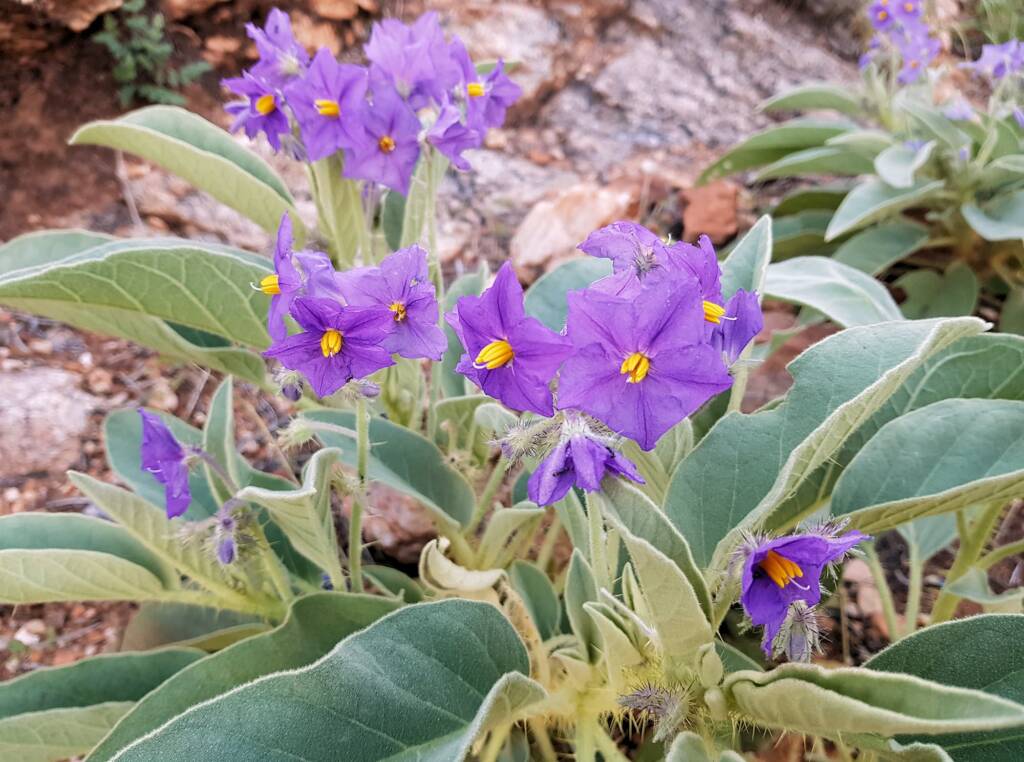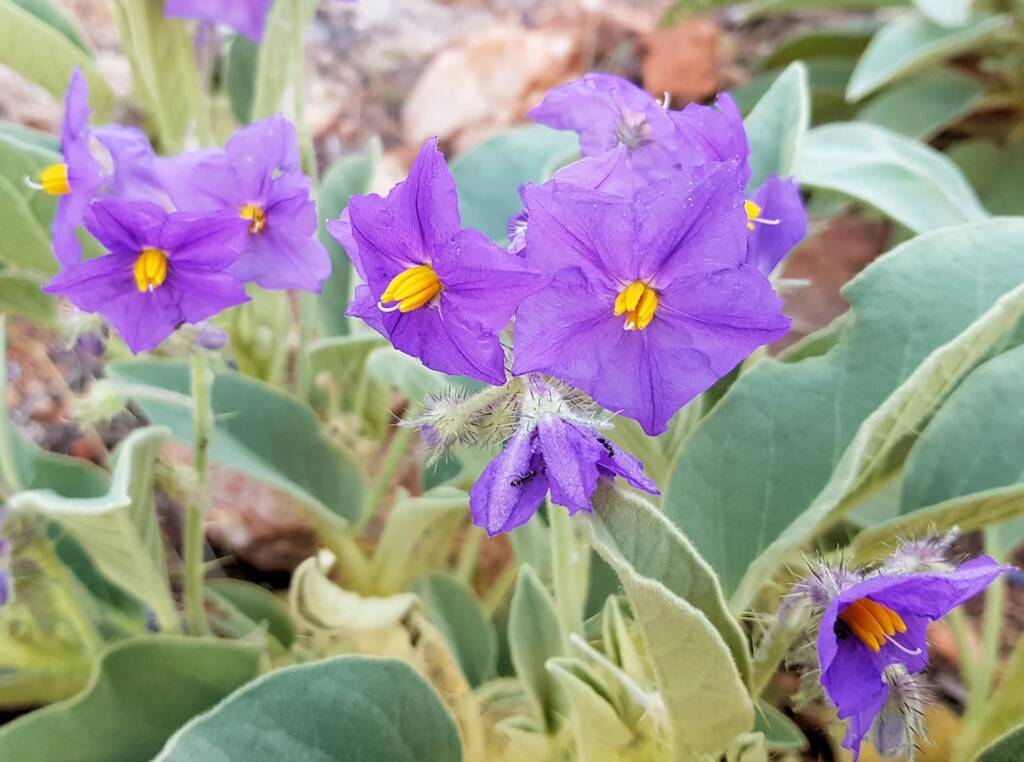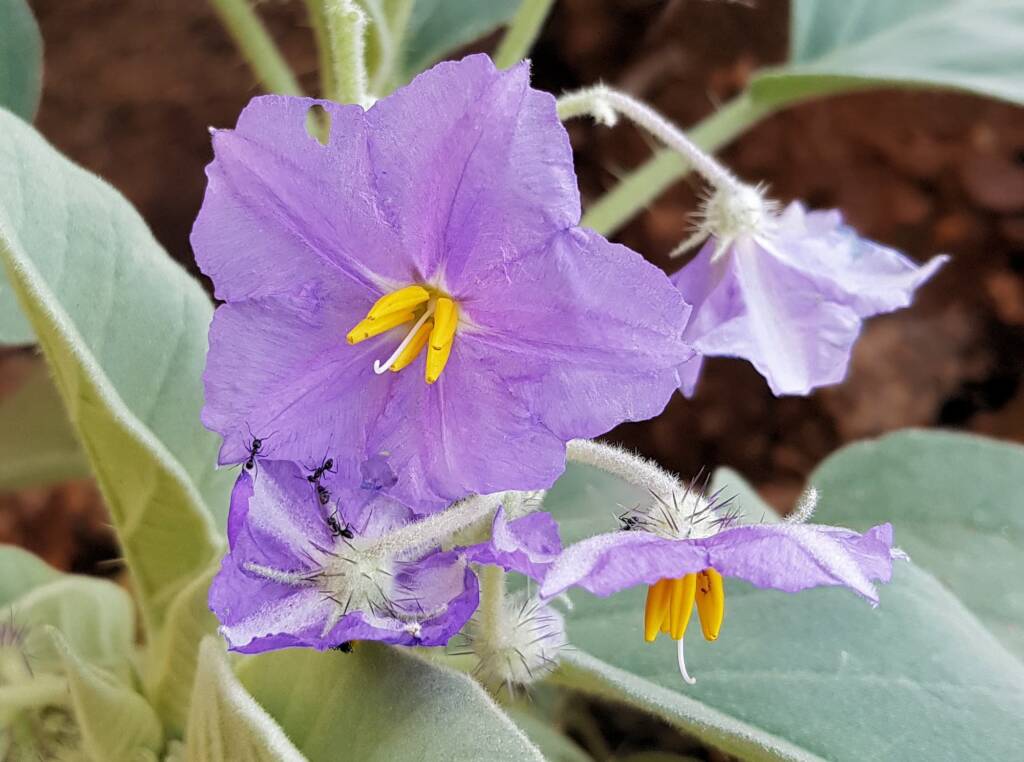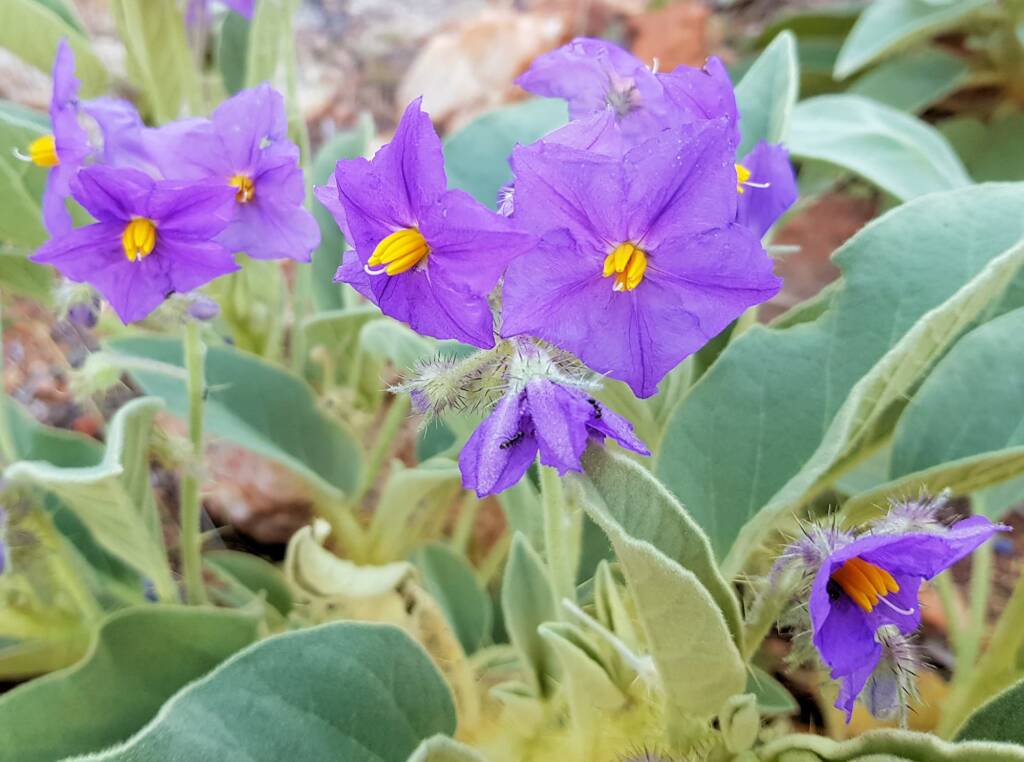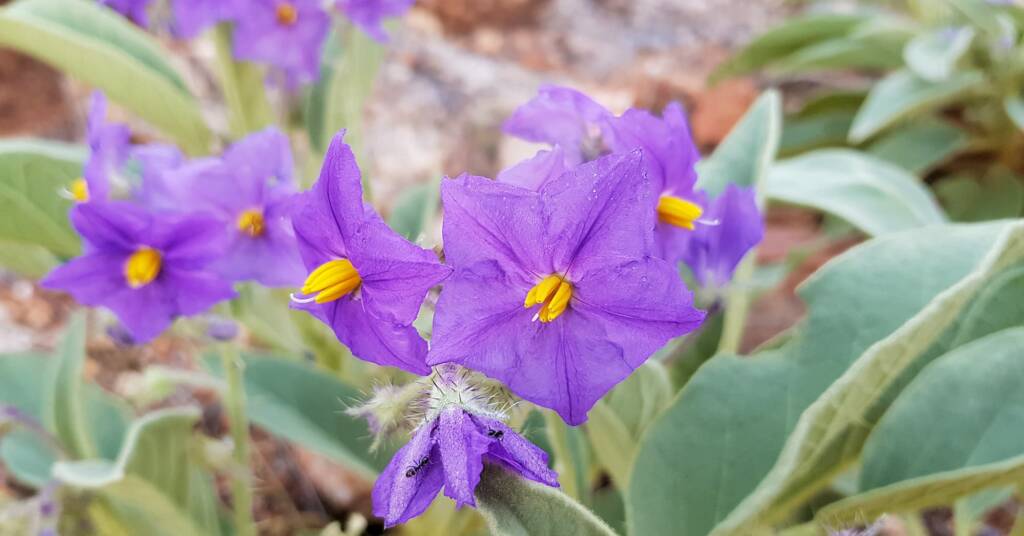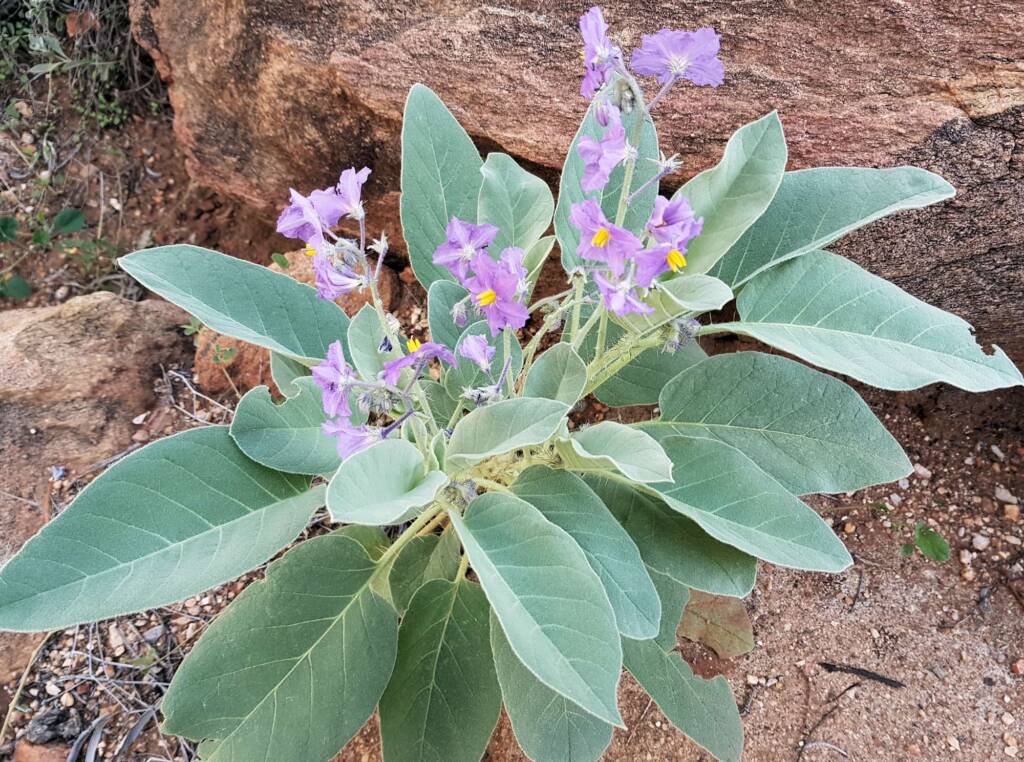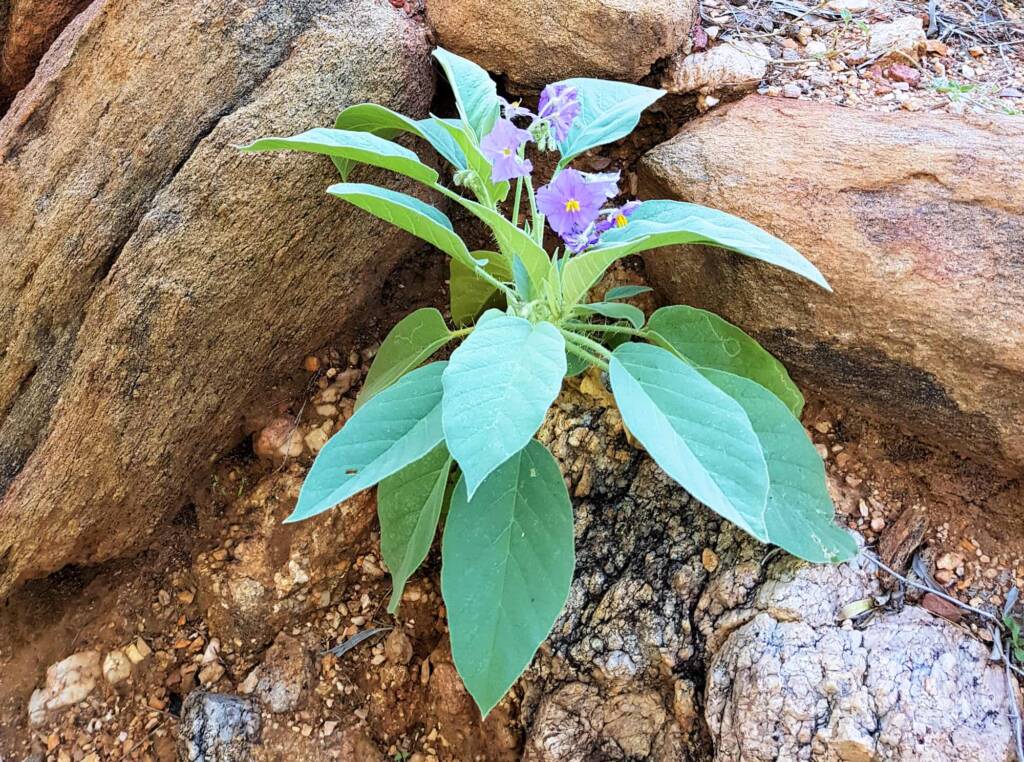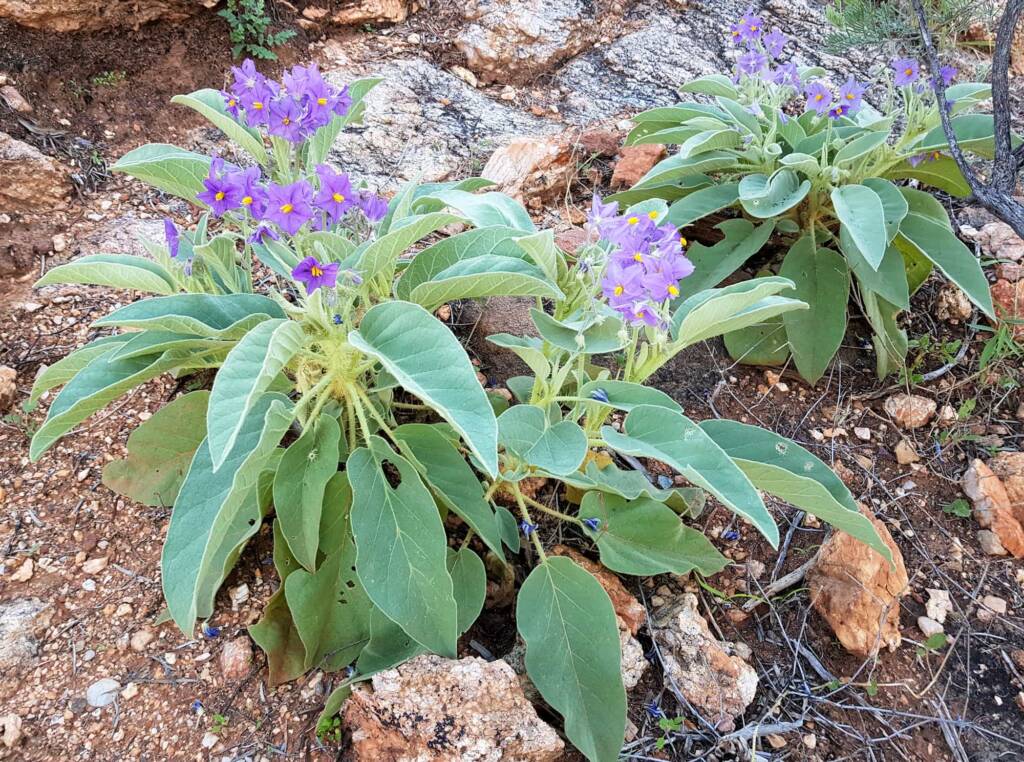Olive Pink Botanic Garden
Wild TomatoWild Tomato – after the rain
OPBG FloraBean Tree Bush Hibiscus Bush Plum Caper Bush / Wild Passionfruit Dead Finish Ghost Gum Heart-leaved Frankenia Krichauff Ranges Fuchsia Mulga Needlewood Pink Fire-bush Potato Bush Prickly Wattle Red-Bud Mallee Shrubby Fox-tail (Ptilotus whitei) Sticky Hopbush (Dodonaea viscosa) Sturt’s Desert Rose Tall Saltbush Wild Tomato Wild Tomato – after the rain Wire-Leaf Mistletoe
With the name of Wild Tomato (Solanum quadriloculatum), this particular Solanum is very poisonous and should not be consumed. It is often mistaken for S. ellipticum.
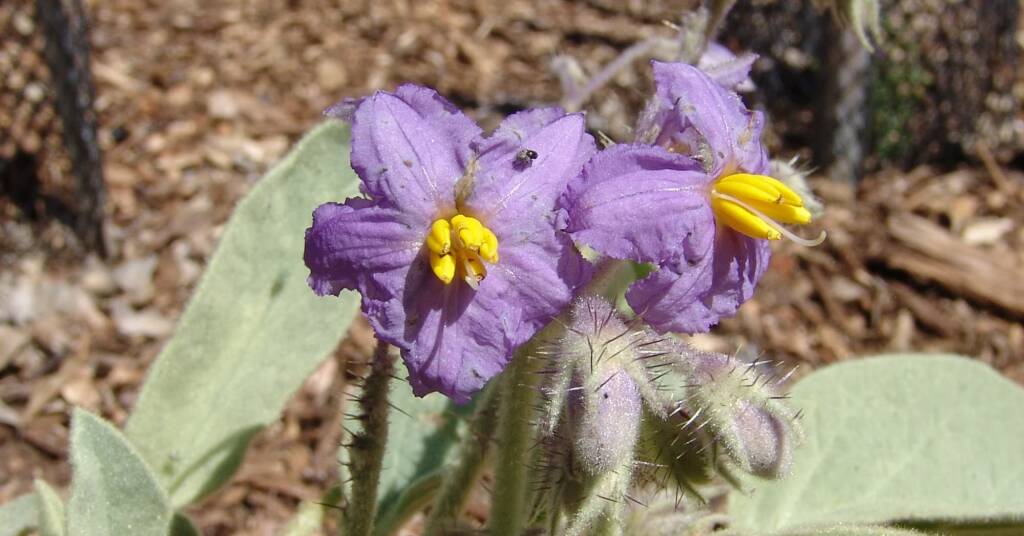
Solanum quadriloculatum is a semi-erect small shrub like plant that grows up to 50 cm high. The leaves are a soft grey-green colour, almost woolly with white hairs, as well as long purplish-black spines. The fruit is angular and spongy when green, becoming light yellow-brown and hard when ripe, drying out to a bone-like texture.
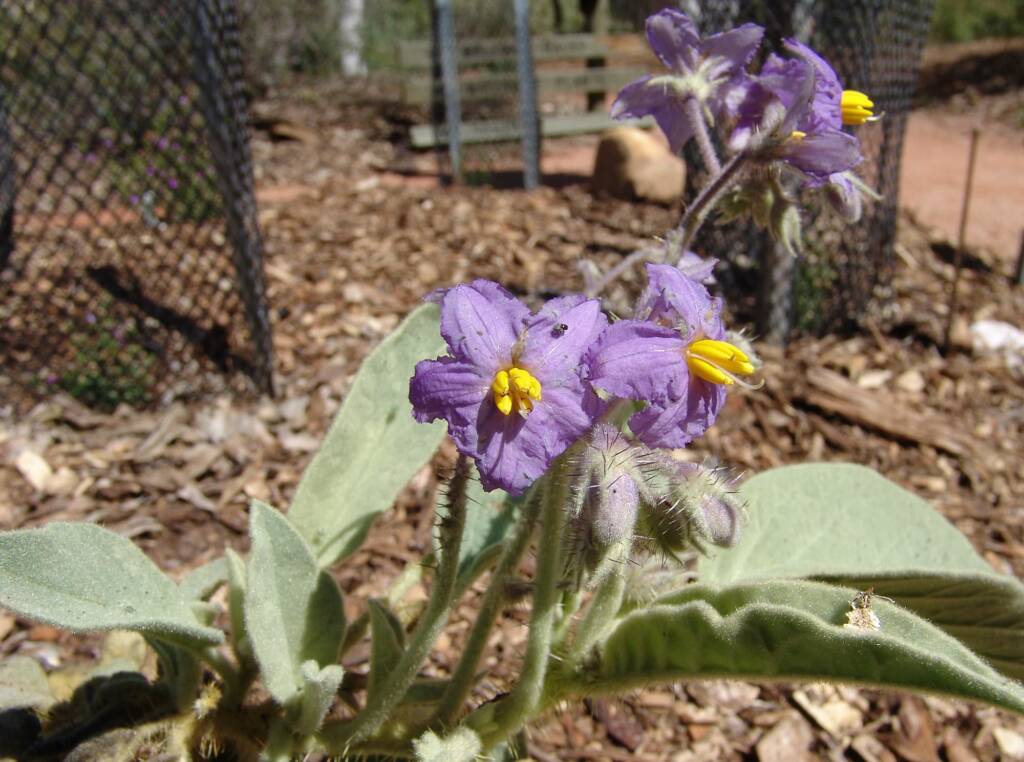
Extreme care should be taken as the Solanum quadriloculatum is often found growing among edible species and often mistaken for Solanum ellipticum.
Whilst the species is considered to be widespread in arid regions, it has been noted that some publication give the distribution as northern Australia.
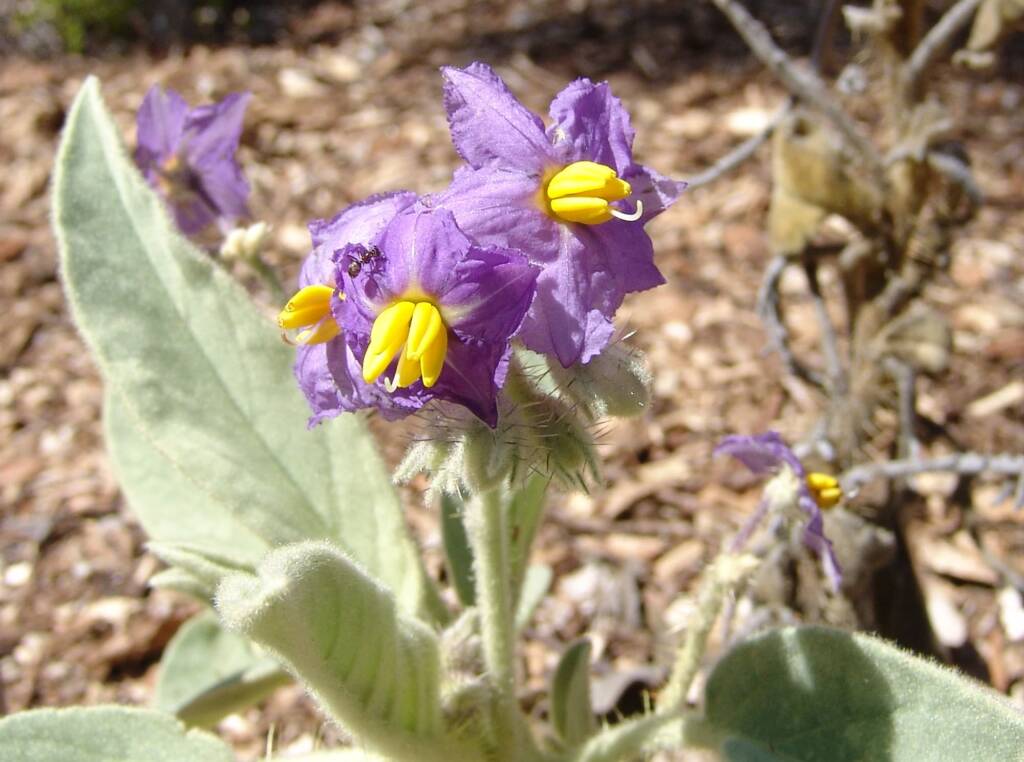
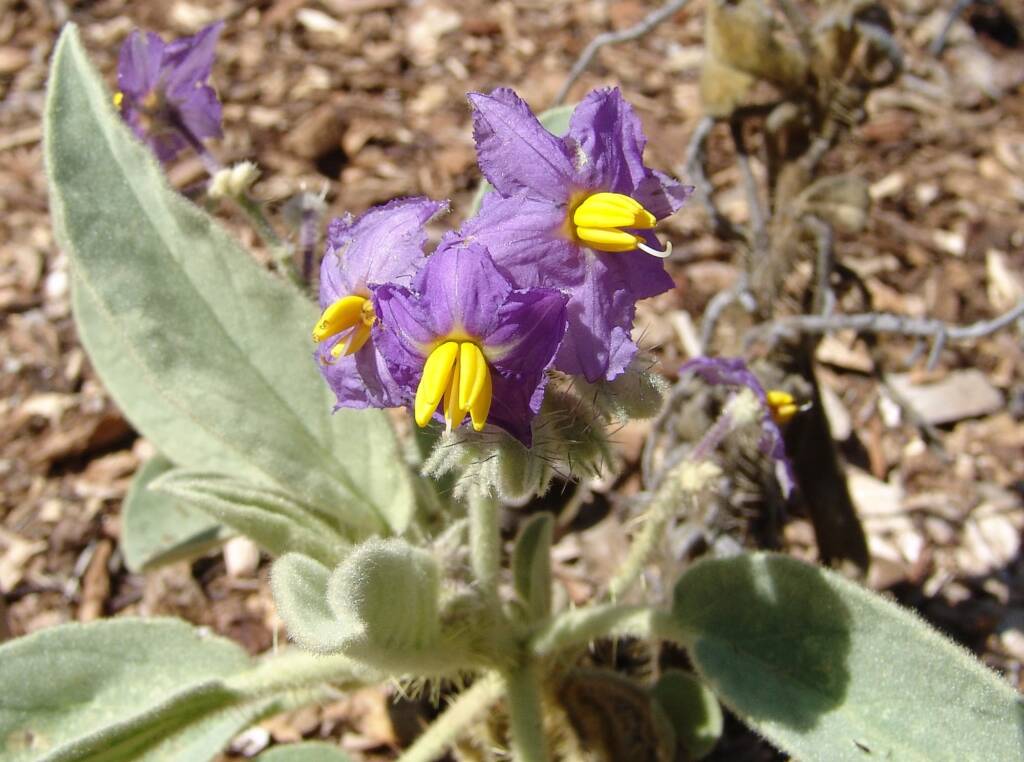

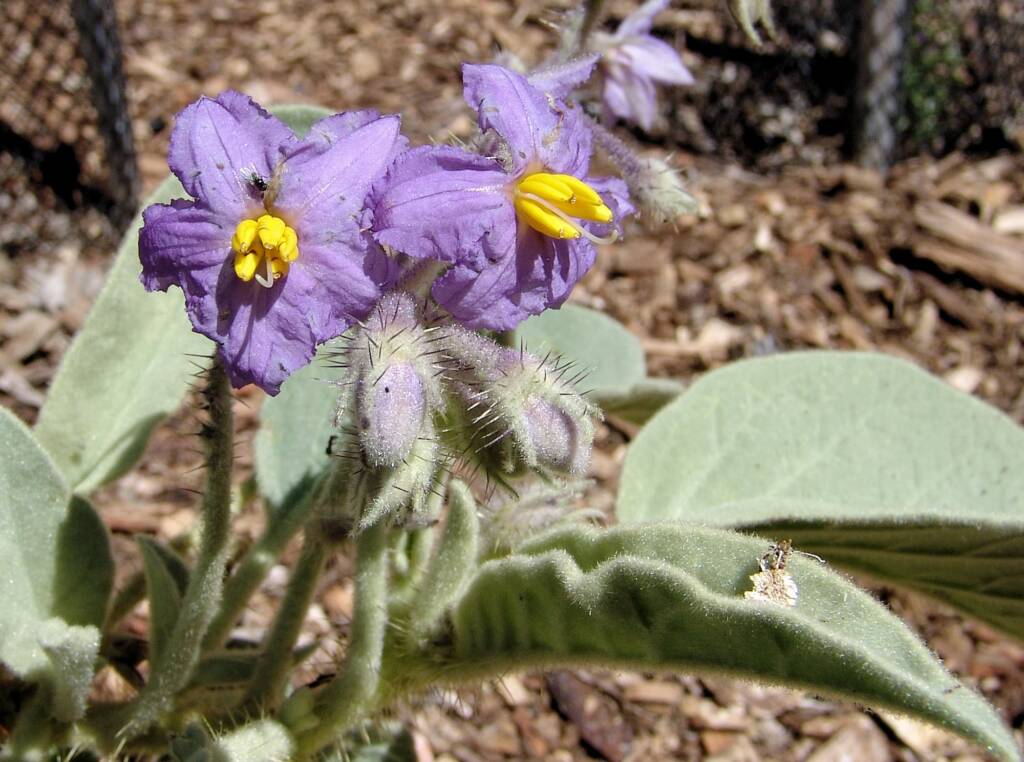
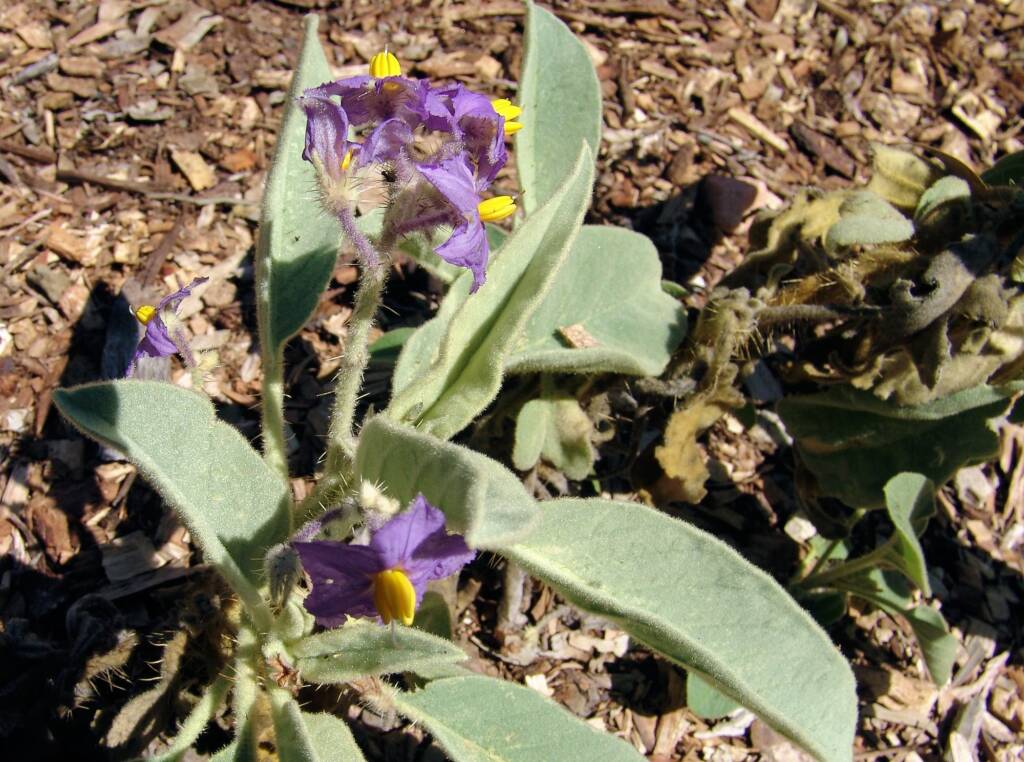
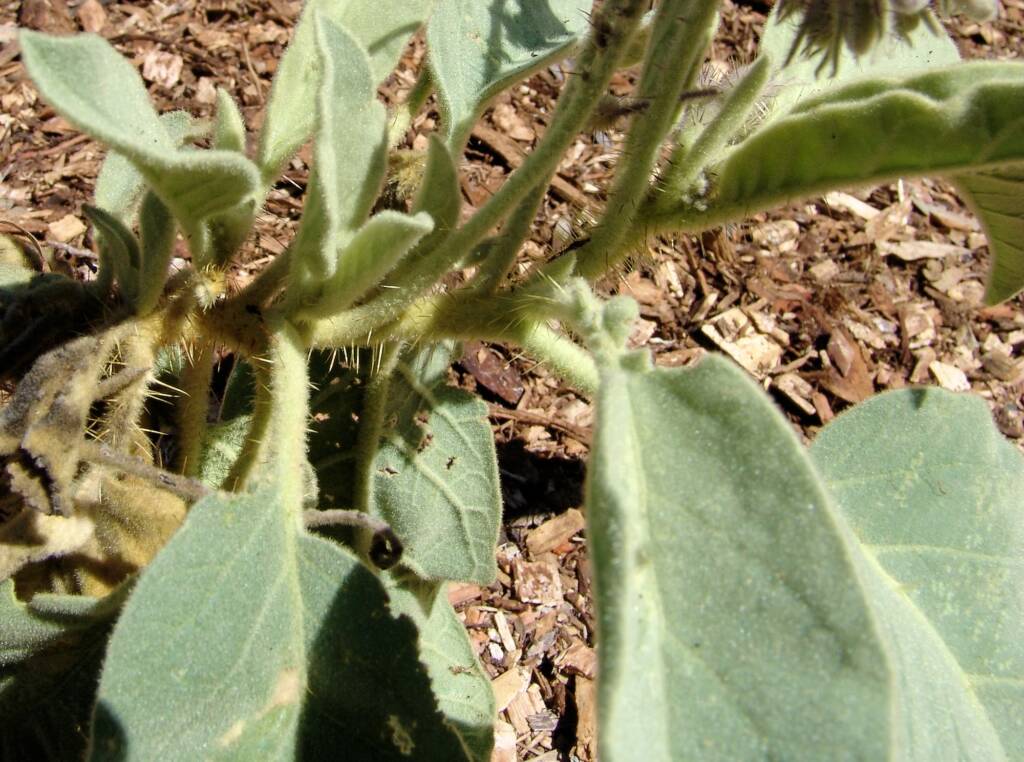
| CAUTION There are many Solanum species that resemble Solanum centrale, and only some of them produce edible fruit. Some closely related species produce fruit that are toxic. The unripe fruit contains the toxin solanine (the same as that found in green potatoes) and must be fully ripened before consumption. S. sturtianum is poisonous and can usually be recognised by the yellow or black dry brittle fruits. S. quadriloculatum is also poisonous. Extreme care must be taken when identifying edible food plants and those used in bush medicine. Some bush foods are only edible at different stages of the plant cycle, or when treated appropriately. Bush medicine should only be used under the guidance of a qualified physician. Information here is only provided for research. You should always seek experts in the field to confirm the identification of the plant and whether they are edible or appropriate. |
- Scientific classification
- Kingdom: Plantae
- Clade: Tracheophytes
- Clade: Angiosperms
- Clade: Eudicots
- Clade: Asterids
- Order: Solanales
- Family: Solanaceae
- Genus: Solanum
- Species: S. quadriloculatum
- Binomial name: Solanum quadriloculatum
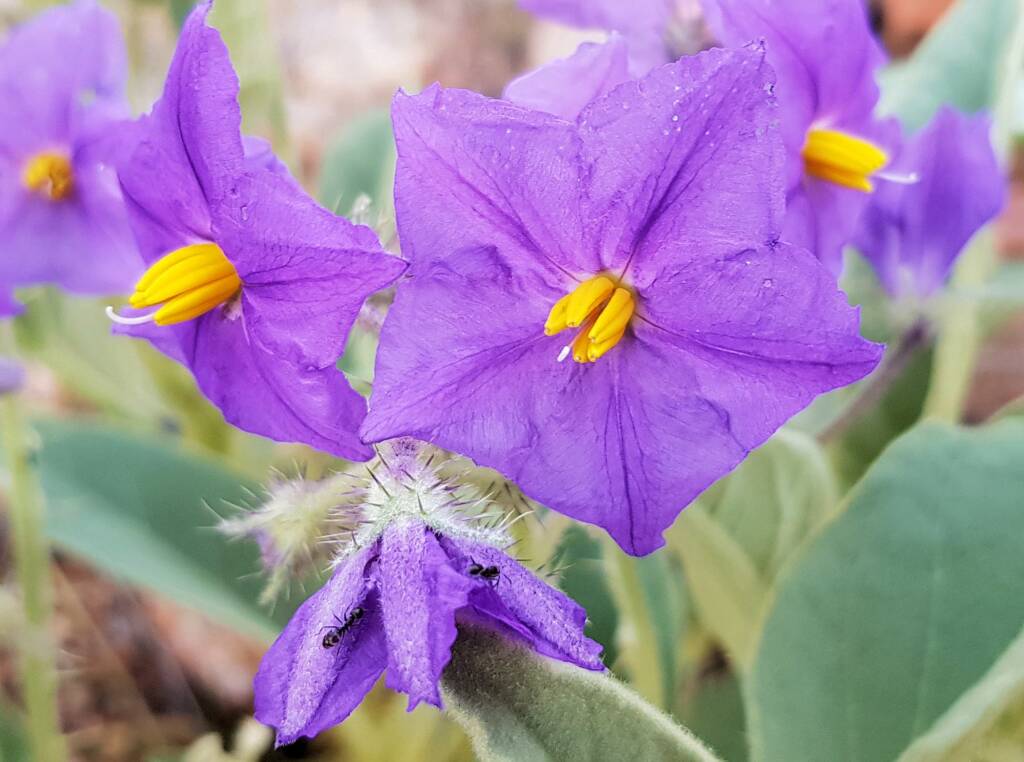
Footnote & References
- Solanum quadriloculatum, Australian Solanum species, eFlora SA, http://www.flora.sa.gov.au/efsa/lucid/Solanaceae/Solanum%20species/key/Australian%20Solanum%20species/Media/Html/Solanum_quadriloculatum.htm
Wild TomatoWild Tomato – after the rain
OPBG FloraBean Tree Bush Hibiscus Bush Plum Caper Bush / Wild Passionfruit Dead Finish Ghost Gum Heart-leaved Frankenia Krichauff Ranges Fuchsia Mulga Needlewood Pink Fire-bush Potato Bush Prickly Wattle Red-Bud Mallee Shrubby Fox-tail (Ptilotus whitei) Sticky Hopbush (Dodonaea viscosa) Sturt’s Desert Rose Tall Saltbush Wild Tomato Wire-Leaf Mistletoe

